![IMG_0169[1] (edited) (1)](https://wellness.nifs.org/hs-fs/hubfs/IMG_0169%5B1%5D%20(edited)%20(1).jpg?width=471&height=325&name=IMG_0169%5B1%5D%20(edited)%20(1).jpg) Want to get a full body workout without the aches and pains of traditional exercise? Aqua exercise could be perfect for you! This low impact exercise is for people of all ages and varying physical abilities. Aqua exercise is especially great for the active aging community. Common workouts performed on land such as walking, running, and weightlifting, are important for building strength and endurance, but these workouts can be strenuous on the joints, ligaments, and bones. There are many ways to exercise in the water and you can do it with or without any equipment. Moving under water is a full body exercise, working your muscles in every possible direction with decreased rick of injury due to less impact and strain. With the help of specially designed exercises, you can achieve a full body workout, activating every muscle group without dealing with stress and strain conventional exercises can cause you. Listed below are four reasons you should be exercising in the water!
Want to get a full body workout without the aches and pains of traditional exercise? Aqua exercise could be perfect for you! This low impact exercise is for people of all ages and varying physical abilities. Aqua exercise is especially great for the active aging community. Common workouts performed on land such as walking, running, and weightlifting, are important for building strength and endurance, but these workouts can be strenuous on the joints, ligaments, and bones. There are many ways to exercise in the water and you can do it with or without any equipment. Moving under water is a full body exercise, working your muscles in every possible direction with decreased rick of injury due to less impact and strain. With the help of specially designed exercises, you can achieve a full body workout, activating every muscle group without dealing with stress and strain conventional exercises can cause you. Listed below are four reasons you should be exercising in the water!
GRAVITY. The biggest difference between exercising in water versus land is the effect of gravity on your body. In our daily lives outside of water, we are constantly feeling the force of gravity at 100%. This force is most felt in the ankles, knees, hips, and back, especially during exercise. Submerging just hip deep into water will eliminate 50% of that force! If you go even deeper into water to perform your exercise, the amount of pressure on your body will continue to decrease. The water alleviates pressure off your bones, ligaments, and muscles. Because of the vast differences between land and water, exercising in a pool is perfect for individuals with chronic pain, arthritis, joint replacements, and even just general lack of strength.
HEALTH BENEFITS. It is important to always exercise according to your own physical abilities and limitations. Just like exercising on land, you can exercise in the water with the goal of elevating your heart rate and breathing for short bursts at a time. Studies have shown that older adults have seen improvements in body composition, explosive strength, functional fitness, and cognitive function after participating in several weeks of aqua aerobic exercise.
ADAPTABILITY. There are many ways you can cater your water workouts to best fit your goals and physical abilities. If you are not the best swimmer, you can purchase a floatation belt or vest which will help to make you feel more comfortable performing exercise in the water. If you want more traction in the water, you may want to consider wearing water shoes or athletic shoes into the pool. There is also equipment you can use to increase the resistance on your muscles and help to build even more strength. You can use water weights which are generally shaped like dumbbells that range in the level of buoyancy. A pool noodle is also a great tool to perform both upper and lower body movements.
BALANCE. Exercise in the water is a perfect opportunity to practice balance! Being surrounded by water eliminates the fear of falling and creates a bridge to improving land-based movements. Practicing balance in water will help to strengthen muscles that are crucial for maintaining good balance on land and reduce the risk of falling.
If you have never tried an aquatic workout, I challenge you to give it a chance! You can even perform the same exercises you typically do on land in the water and see the difference.

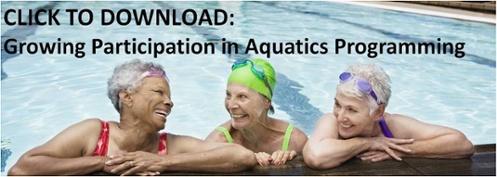
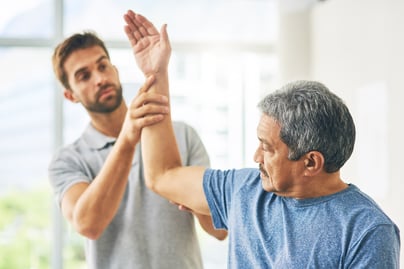 Arthritis is an increasingly common condition that refers to 100 different types of diseases, affects all age groups and affects 1 in 4 adults, equating to 80 million people in the United States. The most common form seen is osteoarthritis or degenerative joint d
Arthritis is an increasingly common condition that refers to 100 different types of diseases, affects all age groups and affects 1 in 4 adults, equating to 80 million people in the United States. The most common form seen is osteoarthritis or degenerative joint d
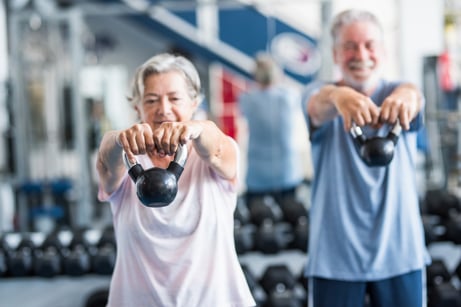 High intensity interval training (HIIT) sounds like something that is best for the 20-40 year old or athletes, however research begs to differ. Studies show that high intensity interval training is good for all ages, even if there are chronic health issues and you’re not a lifelong exerciser. In fact, HIIT workouts may be able to
High intensity interval training (HIIT) sounds like something that is best for the 20-40 year old or athletes, however research begs to differ. Studies show that high intensity interval training is good for all ages, even if there are chronic health issues and you’re not a lifelong exerciser. In fact, HIIT workouts may be able to 
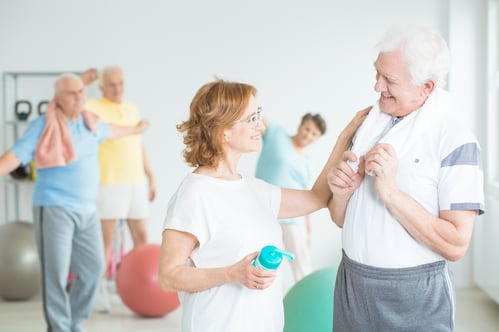 As we age, we are constantly looking for ways to continue living our lives to the absolute fullest. One key element to reducing the effects of aging and to warding off possible health threats is to sustain a healthy and active lifestyle!
As we age, we are constantly looking for ways to continue living our lives to the absolute fullest. One key element to reducing the effects of aging and to warding off possible health threats is to sustain a healthy and active lifestyle!
.jpg?width=467&name=GettyImages-1225625994%20(1).jpg) In
In 
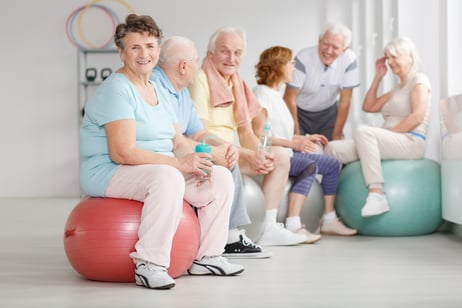 In the Active Aging community, group fitness is a large part of a resident’s daily life. Exercising solo and following a written workout plan doesn’t cut it for some residents. They need an extra motivational factor, such as being with a group and having someone instruct them step by step. Having friends around at all times is important to residents. It gives them a sense of security and accomplishment when they look in the mirror and see themselves exercising with close friends in the community.
In the Active Aging community, group fitness is a large part of a resident’s daily life. Exercising solo and following a written workout plan doesn’t cut it for some residents. They need an extra motivational factor, such as being with a group and having someone instruct them step by step. Having friends around at all times is important to residents. It gives them a sense of security and accomplishment when they look in the mirror and see themselves exercising with close friends in the community.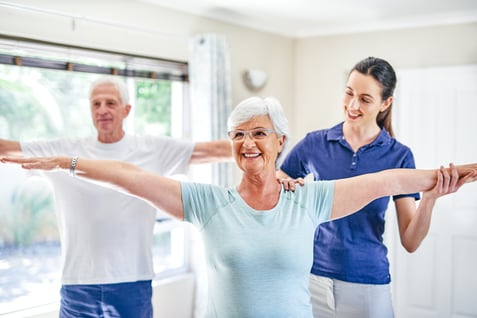 We already know that exercise is a key contributor to a healthy lifestyle overall, but for those with Parkinson’s Disease (PD) this is no exception! In fact, exercise is extremely critical for people with PD, and
We already know that exercise is a key contributor to a healthy lifestyle overall, but for those with Parkinson’s Disease (PD) this is no exception! In fact, exercise is extremely critical for people with PD, and .jpg?width=422&name=GettyImages-674714126%20(1).jpg) I recently had a resident from one of our client sites in Illinois contact me wanting to know which senior living communities in greater-Indianapolis NIFS was partnered with as she would soon be relocating to be closer to her daughter. She wanted to refine her search to communities where NIFS was similarly providing a robust health and fitness program to what she had come to experience in her current community. She had done some exploring on her own and quickly recognized that communities simply having an onsite fitness center with some weekly
I recently had a resident from one of our client sites in Illinois contact me wanting to know which senior living communities in greater-Indianapolis NIFS was partnered with as she would soon be relocating to be closer to her daughter. She wanted to refine her search to communities where NIFS was similarly providing a robust health and fitness program to what she had come to experience in her current community. She had done some exploring on her own and quickly recognized that communities simply having an onsite fitness center with some weekly 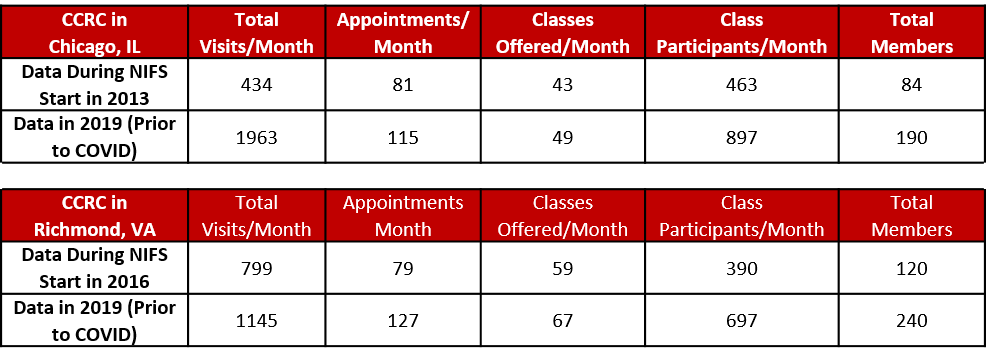

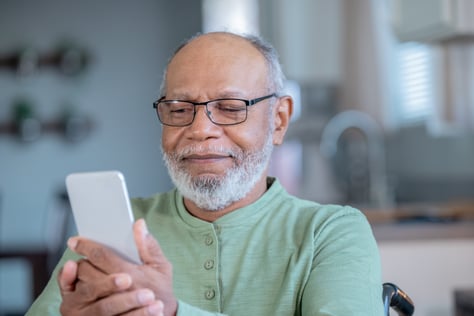 With NIFS non-profit mission rooted in research and helping people age successfully through the lifespan, we are excited to support a new research study from Johnson and Johnson, in collaboration with Apple.
With NIFS non-profit mission rooted in research and helping people age successfully through the lifespan, we are excited to support a new research study from Johnson and Johnson, in collaboration with Apple. 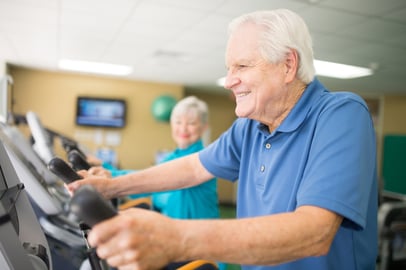 The senior living industry has been fervently moving over the past decade to renovate and build fitness centers for their residents and the momentum is only growing.
The senior living industry has been fervently moving over the past decade to renovate and build fitness centers for their residents and the momentum is only growing.